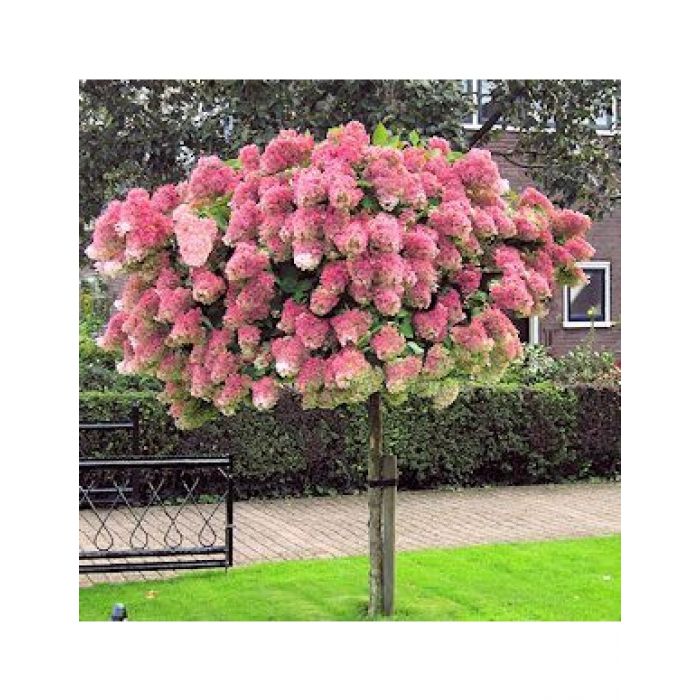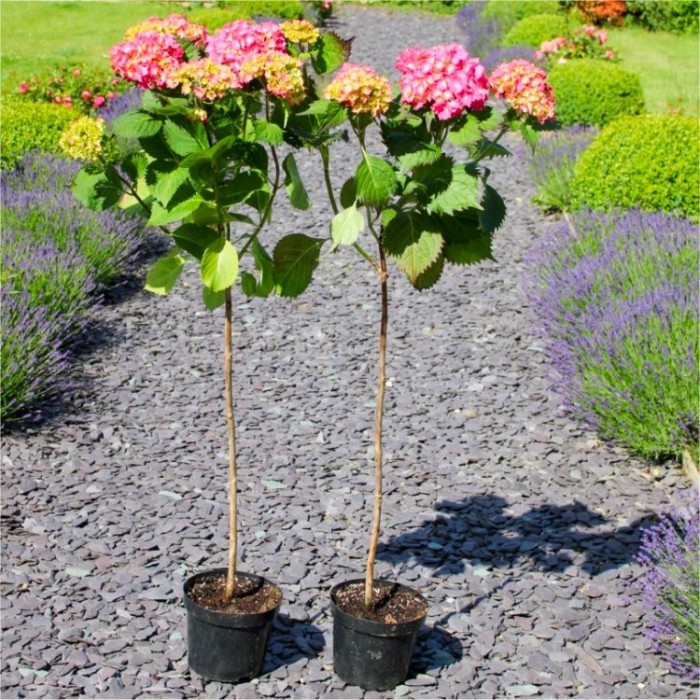The Standard Hydrangea: A Beginner's Guide
The Standard Hydrangea: A Beginner's Guide
Hydrangeas are one of the most popular flowering shrubs in the world, and for good reason. They are known for their large, colorful blooms that can brighten up any garden. Standard hydrangeas are a type of hydrangea that grows upright on a single stem. They are typically taller than other types of hydrangeas, and they can reach heights of up to 10 feet.
Standard hydrangeas are relatively easy to care for, making them a good choice for beginner gardeners. They prefer full sun to partial shade and moist, well-drained soil. They should be watered regularly, especially during hot, dry weather. Standard hydrangeas do not need to be pruned heavily, but they should be trimmed in the spring to remove any dead or damaged branches.
There are many different varieties of standard hydrangeas, each with its own unique flower color. Some popular varieties include:
- Hydrangea macrophylla (Bigleaf hydrangea): This variety is known for its large, round blooms that can be pink, blue, or purple.
- Hydrangea paniculata (Panicle hydrangea): This variety has conical blooms that can be white, pink, or blue.
- Hydrangea arborescens (Smooth hydrangea): This variety has smaller, more delicate blooms that can be white, pink, or blue.
No matter what variety you choose, standard hydrangeas are sure to add beauty and color to your garden.
Here are some additional tips for caring for standard hydrangeas:
- Fertilize in the spring and fall. Use a balanced fertilizer, such as 10-10-10.
- Mulch around the plant to help retain moisture and suppress weeds.
- Protect the plant from winter cold. In colder climates, you may need to wrap the plant in burlap or other protective material.
- Prune in the spring to remove dead or damaged branches. You can also prune to shape the plant.
With proper care, standard hydrangeas will thrive for many years to come.
Conclusion
Standard hydrangeas are a beautiful and versatile addition to any garden. They are relatively easy to care for, and there are many different varieties to choose from. With a little TLC, your standard hydrangeas will bloom for years to come.
Standard hydrangeas are a beautiful and versatile addition to any garden. They come in a variety of colors, including white, pink, blue, and purple. They can also be grown in a variety of climates, from USDA zones 3 to 9.
If you're interested in learning more about standard hydrangeas, I suggest you visit . This website has a wealth of information about hydrangeas, including care instructions, planting tips, and a variety of hydrangea varieties.
also has a blog where you can find articles about hydrangeas, as well as a forum where you can ask questions and get advice from other hydrangea enthusiasts.
I hope you'll visit to learn more about standard hydrangeas.
FAQ of standard hydrangea
- What are standard hydrangeas?
Standard hydrangeas are certain types of hydrangea that have been pruned and trained into a tree-like form. They are also called hydrangea trees. Standard hydrangeas are low-maintenance flowering trees that make a feature statement in the garden.
- How much sun do standard hydrangeas need?
Standard hydrangeas need full sun to partial shade. They will do best in an area that receives at least 6 hours of sunlight per day. However, they can tolerate some shade, especially in hot, dry climates.
- How much water do standard hydrangeas need?
Standard hydrangeas need regular watering, especially during hot, dry weather. The soil should be kept moist, but not soggy. Water deeply and less frequently, rather than shallowly and more often.
- How do I fertilize standard hydrangeas?
Standard hydrangeas should be fertilized in the spring with a balanced fertilizer, such as 10-10-10. You can also fertilize them with a fertilizer specifically for hydrangeas. Fertilize again in the fall, but use a fertilizer with less nitrogen.
- How do I prune standard hydrangeas?
Standard hydrangeas should be pruned in the spring, before the new growth begins. Prune to remove any dead, diseased, or damaged branches. You can also prune to shape the tree.
Image of standard hydrangea
5 different images of "standard hydrangea" from Pinterest:
- A large, white hydrangea bush in full bloom. The flowers are arranged in large, round clusters.

- A pink hydrangea bush with dark green leaves. The flowers are a soft pink color and are arranged in clusters of varying sizes.

- A blue hydrangea bush with light green leaves. The flowers are a deep blue color and are arranged in large, round clusters.

- A mophead hydrangea bush with light green leaves. The flowers are a white color and are arranged in large, round clusters.

- A lacecap hydrangea bush with dark green leaves. The flowers are a white color with pink edges and are arranged in clusters of varying sizes.

Post a Comment for "The Standard Hydrangea: A Beginner's Guide"